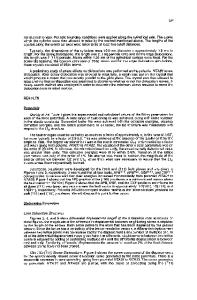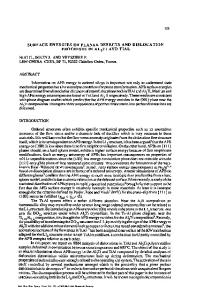Planar fault energies and dislocation core spreading in B2 NiAl
- PDF / 845,895 Bytes
- 9 Pages / 576 x 792 pts Page_size
- 61 Downloads / 398 Views
We present computer simulation results for the planar faults involved in core spreading of (100) and (111) dislocations. Seven y surfaces were computed for different crystallographic planes ({110}, {112}, {123}, {210}, {100}, {111}, and {122}). Stable APB's are observed in the {110} and {112} planes, but they are deviated from the exact l / 2 a ( l l l ) position. No other stable planar fault was observed. The fact that a stable minimum is observed deviated from the 1/2(111) position suggests the possibility of different dissociation reactions for the (111) screw dislocation in the {110} and {112} planes. The fact that no other stable minima were observed in the y surfaces indicates that no true core dissociation is expected for the (100) dislocations. We propose that dislocation core spreading in various planes can be understood in terms of the directions of lowest restoring forces observed for the corresponding y surfaces.
I. INTRODUCTION The NiAl intermetallic compound is a candidate for high-temperature structural applications because of its high melting point, high yield strength, low density, and oxidation resistance. The problem of limited ductility and grain boundary brittleness in the polycrystalline material stands in the way of promising applications. For this reason, the deformation mechanism of NiAl in a B2 phase has recently been the subject of a major research effort.1 The present work represents an extensive calculation through computer simulation of the energy of planar shear faults on several crystallographic planes of the NiAl B2 structure. The purpose of this work is to better understand the dislocation behavior in B2 NiAl with the goal of contributing to the design of alloys with increased ductility through alloying or processing. Previous results of computer modeling of the (100) and (111) dislocations in this material have been reported and compared with experimental observations.2'3 The dislocation cores simulated were found to spread along well-defined crystallographic planes. In this study, we investigate the energy of planar faults in these planes which accommodate most of the shear in the dislocation core, which is known to influence dislocation motion and consequently determine the mechanical behavior.4'5 The energy of the planar faults is computed for several different shift vectors in the plane of the fault in order to describe the y surface,4'5 which is defined as energy versus fault vector within the plane. We discuss the relations between the planar fault energy and the dislocation core spreading in NiAl. Predicted dissociations and spreading of the (100) and (111) dislocations on the 3050 http://journals.cambridge.org
J. Mater. Res., Vol. 8, No. 12, Dec 1993 Downloaded: 14 Mar 2015
{110} and {112} planes are summarized in accordance with the y surfaces computed. II. METHOD OF SIMULATION A. Simulation technique The computer simulation studies of planar fault energies in NiAl were carried out using the standard atomistic technique. The interatomic potentials used are of the embed
Data Loading...











